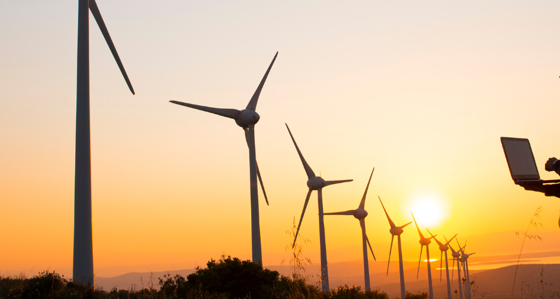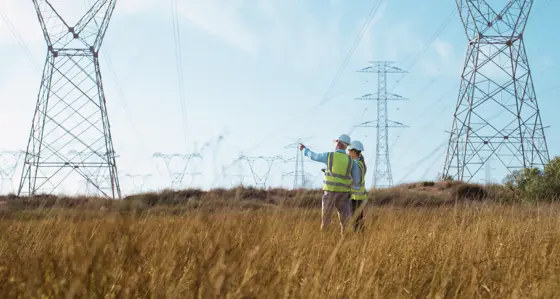
India’s complex and rapid energy transition presents major opportunities for investors
2 January 2024
India, the fifth largest economy in the world, and one of the fastest growing also became the world’s most populous country in 2023. India’s national grid is one of the world’s largest operational synchronous grids, with over 1500TWh of demand today (five times that of the British power system) and has plans to install over 40 GW of new capacity each year to 2030 and beyond.
India is undergoing an accelerated and complex energy transition to meet 50% of its electricity requirements by renewable energy sources by 2030. On the supply side, India needs to phase out coal and increase renewables in line with its 2070 Net Zero targets; on the demand side, GDP growth and high electricity demand are expected to continue. These clear trends, coupled with the requirements of India’s large-scale renewables implementation, position the country as an enviable destination for energy transition investors.
India’s energy transition will primarily involve adding solar, wind and offshore wind. Replacing the existing coal fleet with large-scale renewables will require substantial investment in energy storage to firm the supply, due to the intermittent nature of variable renewable technologies. We see significant opportunity for both battery energy storage systems (BESS) and pumped hydro.
In recent years, India’s market reforms have shifted their focus towards enabling this energy transition. These reforms, supported by a robust regulatory framework, further make the case for investing in the nation’s renewable energy value chain.
Baringa’s India Wholesale Electricity Market Report provides an independent perspective on the demand and supply-side changes, drawing on information from public sources as well as Baringa in-house views. The report provides projections of black and green prices in the wholesale electricity market, and capacity and generation mixes.
India’s power demand has increased by 8% and higher in the past 2-3 years. What's driving this?
India has experienced staggering economic growth in the last decade – some of the highest globally. Between 2022 and 2023, India’s electricity demand grew between 8-9% due to increased consumption and strong GDP growth.
Currently, per capita consumption of electricity in India is still significantly lower than that of developed countries, and less than half the world average. However, over the coming decades, the pace of economic development is expected to lift per capita electricity consumption significantly.
India has renewed its focus on export-led manufacturing, which it is supporting with the Production Linked Incentive (PLI) Scheme. This scheme offers corporations in India incentives for manufacturing and producing certain products, particularly those required for the Net Zero transition.
This increase in industrial activity, along with a growing middle-class, are the primary forces driving the next phase of India’s electricity demand. India’s strong projected GDP growth puts its electricity demand on track to grow between 5-6% in the next 10 to 15 years.
India’s 2070 Net Zero ambitions open up significant investment opportunities in large-scale renewables, and inbound investment will be required
Achieving its target of 500GW of non-fossil fuel capacity by 2030 will require India’s government to tender out more than 40 - 50GW of non-fossil capacity every year until then. To date, 40 GW of tender capacities have already been announced for 2024. This growth will be through a mix of large-scale solar, wind, offshore wind and energy storage linked capacities.
India is also seeking investment in green hydrogen, with a target of 5MTPA by 2030. This is aligned with its strategy of building an export-driven market, leveraging the country’s lower cost of production and abundance of renewable resources.
The current wholesale market serves less than 10% of overall demand, but the Indian Government is planning to increase this exposure through targeted policy and tendering strategies. This is also expected to support the integration of large-scale renewable additions in the future. Steps like market-based economic dispatch (MBED) mechanism and market coupling for power exchanges, are some of the policies under discussion for deepening the wholesale markets. In turn, a growing wholesale exposure will allow both utilities and developers to optimise their portfolios.
Further innovative measures on the tendering side, such as round-the-clock tenders (RTC or now FDRE), have also been introduced, where hybrid renewable capacities are customized as per customer requirements. These tenders have proved attractive to utilities and investors alike, often commanding a higher return premium due to their design complexity, higher capex requirements, and a stronger ability to execute.
Beyond 2030, India is expected to continue to offer opportunities across renewables, BESS, pumped hydrogen, green hydrogen, corporate PPAs, solar and BESS manufacturing.
The implementation of large-scale renewables creates additional investment opportunities for energy storage
India is looking to add more than 50GW of energy storage by 2030, including both BESS and pumped hydro. The current market design is expected to undergo changes in the medium to long term to allow BESS. Until then, the market will depend on contracts like RTC/FDRE, and suitable tolling arrangements with off takers. Recently, the government has announced financial support through viability gap funding to support BESS investments in the coming years.
Pumped hydro will be another key storage technology deployed across different states to ensure security of supply. The Indian government estimates that the country has approximately 100GW of pumped hydro storage potential and has set a target of 18GW of pumped hydro capacity by 2030.
Finance will play a key role in enabling the large-scale and accelerated energy transition
The energy transition will not only require financing for generation assets like solar, wind, offshore wind and hydro but also for energy storage, transmission upgrades and grid modernization, and new emerging technologies such as hydrogen. The significant transition across the entire value chain, including the demand side, will require new investment every year.
The IEA estimates that India’s energy transition will require a minimum of USD160 billion of investment per year. Based on recent trends, a significant portion of this looks likely to come through foreign direct investment. To further encourage foreign direct investment and improve project risk profiles, the Indian Government is utilising innovative contracting structures, such as Power Purchasing Agreements (PPAs), which are being signed directly with central government agencies such as SECI which have solid credit ratings. This improves the receivable cycle for projects, so debt sizing is not an issue.
Ongoing and recently announced market reforms should be watched closely by investors
Investors will be keenly monitoring the impact and pace of the coal phase-out and demand growth on the market to identify new investment opportunities. They should also be alert to upcoming market reform and government policy announcements and incentives to identify indicators of further risks and opportunities.
Baringa has supported investors in hundreds of project financing transactions across the Asia-Pacific region. We are independent and trusted by major lenders in assessing the economic viability of projects and transactions. We help our clients to identify which technologies to invest in, the locations with the most potential and the optimum timing of market entry.
Find out more in our India Wholesale Electricity Market Report, a comprehensive overview of the Indian power market, alongside our price projections and key insights, by submitting your details via the form below or contacting one of our experts.
Our Experts

Related Insights

Synchronisation of the Baltic power system with Continental Europe opens exciting opportunities for batteries
The synchronisation of the Baltic power system with continental Europe is a significant milestone that opens exciting opportunities for batteries.
Read more
Renewables Market Scanning Report
Which are the most attractive markets for investing in renewable assets globally?
Read more
How can investors and developers capitalise on South Korea’s evolving energy market?
South Korea's energy market is transforming in line with the global shift to renewable energy.
Read more
How ‘Equipment-as-a-Service’ models unlock commercial decarbonisation
Read our latest piece, created in collaboration with Tallarna, to explore the components of an ‘Equipment-as-a-Service’ model, how they can be deployed, and how to increase take-up.
Read moreRelated Client Stories

Maximising impact from AI investment for a global energy leader
Discover how a series of experiential learning events resulted in employee confidence in AI skills hitting 85%.
Read more
Maintaining the stability of the New South Wales power system
How do you ensure the future stability of the NSW power system?
Read more
Using AI to manage applications for connecting low-carbon devices
With growing calls for processes to be standardised, Baringa and Energy Networks Association (ENA) came together to develop and launch the first central industry platform to transform the way registrations for low-carbon devices are managed.
Read more
Collaborating globally to future proof Australia’s water resources
How do you effectively manage the ever-evolving supply and demand challenges of water resources?
Read moreIs digital and AI delivering what your business needs?
Digital and AI can solve your toughest challenges and elevate your business performance. But success isn’t always straightforward. Where can you unlock opportunity? And what does it take to set the foundation for lasting success?